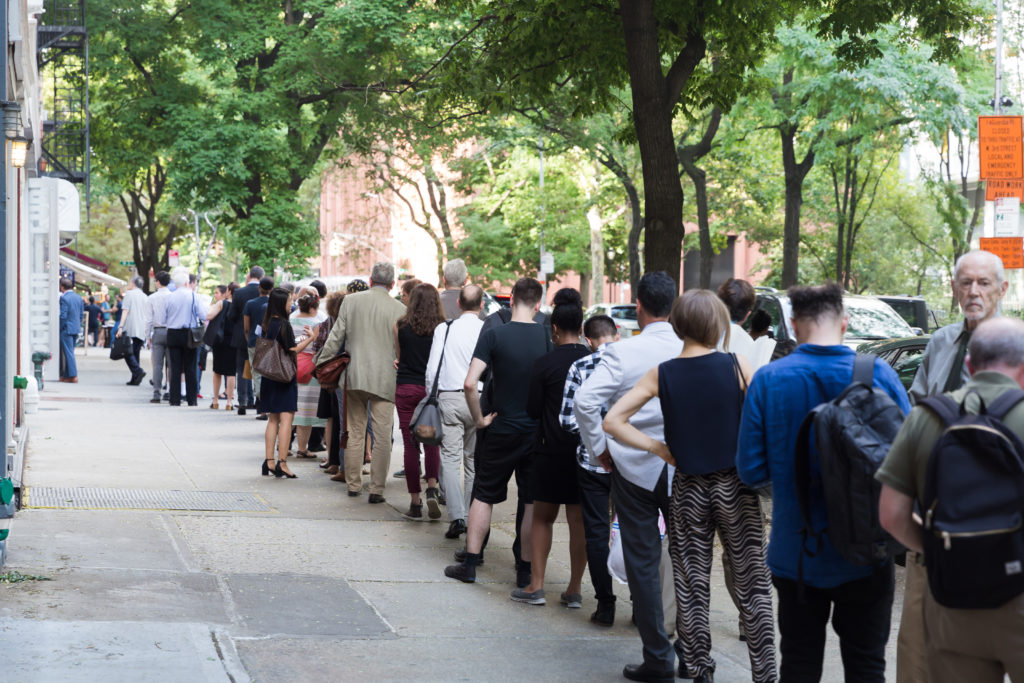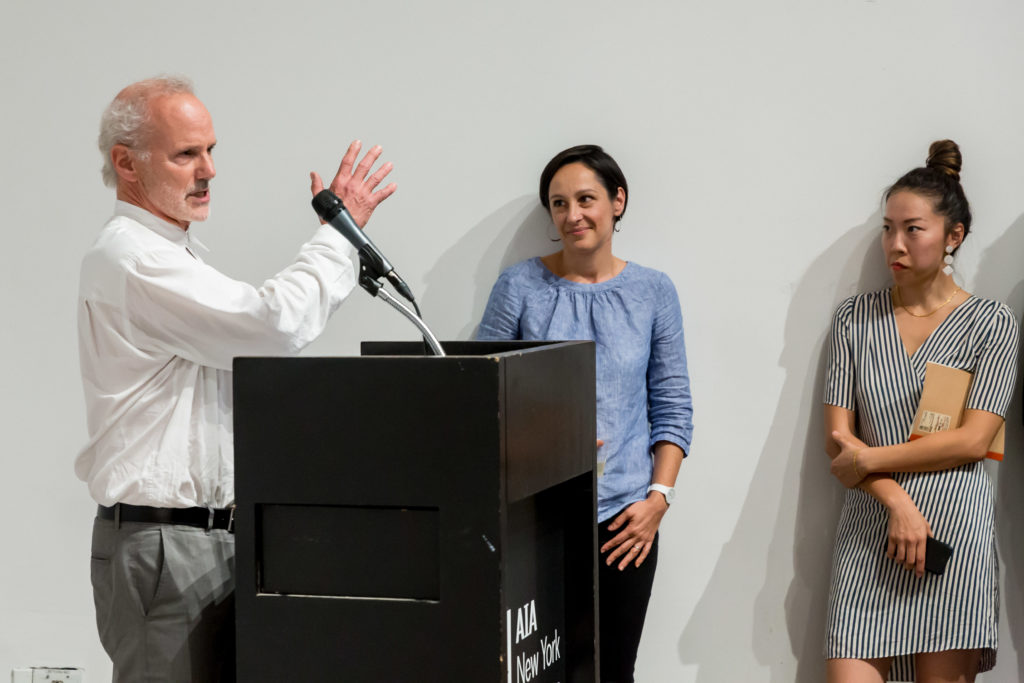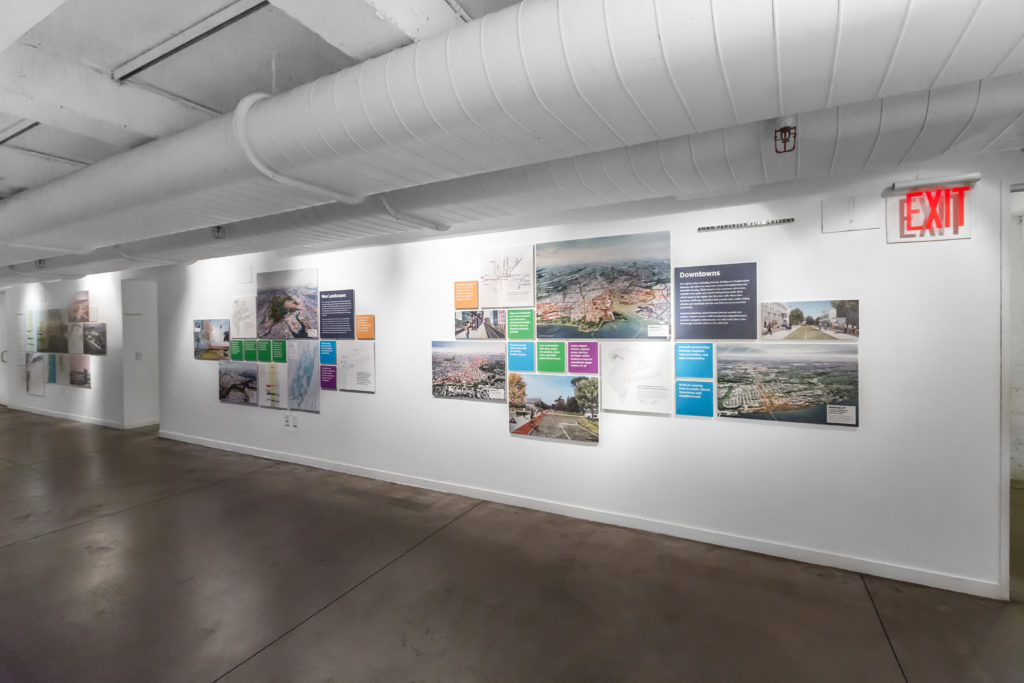On July 26, the Center For Architecture welcomed over 275 design enthusiasts, urban planners and community members for opening of , The Future of the New York Metropolitan Region: The Fourth Regional Plan. The exhibit allows visitors to explore the Fourth Regional Plan in exhibit form.

Photo: Erik Bardin
With a line from the front door of the Center for Architecture all the way down LaGuardia Place, the excitement for the Fourth Plan was clear. Once inside guests had the opportunity to see how designers imagine the 61 policy and planning recommendations from the Fourth Plan reshaping the way our region looks, feels and moves over the next 25 years.
“After five years of work, releasing this plan last November was exhilarating,” said RPA Executive Vice President Juliette Michaelson. Juliette went on to introduce Senior Design Fellow Rob Lane, who worked with a number of partners to help integrate design into the Fourth Plan.

Photo: Erik Bardin
“Most of the work in the hallway would probably be considered illustration: there is a lot of design intention in those drawings,” Rob Lane told the crowd. “But they were largely done to illustrate how the 4th Plan would play out in different kinds of places, not test the 4th Plan.”
To round out opening remarks, Ellen Neises, Executive Director of PennPraxis and adjunct professor at the University of Pennsylvania PennDesign reflected on working on the Fourth Plan, and how it pushed her and her team to think bigger. “This was probably one of the most challenging projects I’ve done in my career,” Neises laughs. “But it was also very rewarding to think how we can ultimately create a new reality that will improve our region.”

Want to see it for yourself? The exhibit will be up through November 3, 2018 at the Center for Architecture, admission to the galleries is free.
RPA and the Center for Architecture will also be hosting two Fourth Plan Events in the space on September 14th and October 29th. Check out our event calendar or the Center for Architecture calendar for more information closer to the events.
